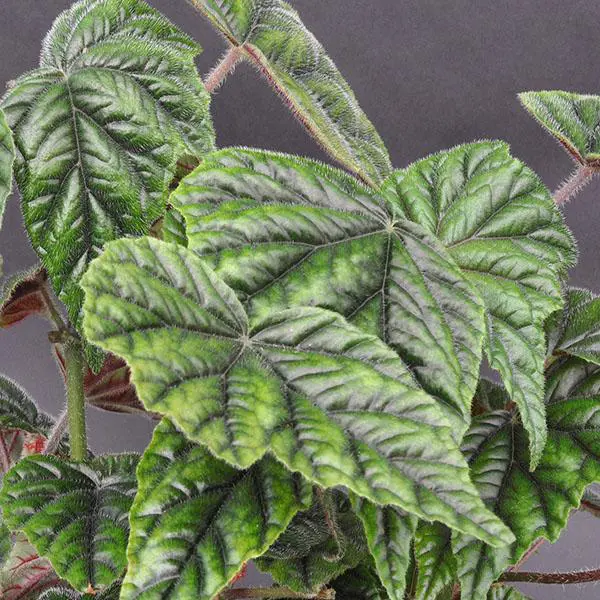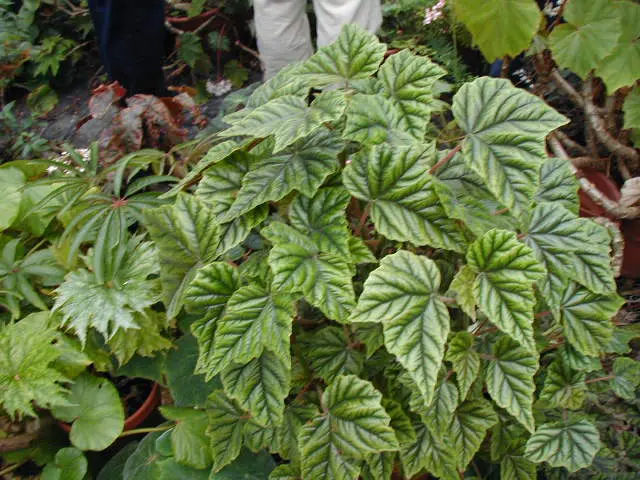B. metallica W.G. Smith is a Brazilian species first described in Floral Magazine in London in 1876. The earliest hybrid of record of this species was B. ‘Margaritae’ was done in France prior to 1882; this cross was a hybrid with B. echinosepala.
This shrub‑like species has sturdy, but thin, erect stems. The leaves have been described variously as “iridescent and embossed silk” (Alice Clark) and “having the shininess of polished metal”. Mature leaves are dark green with red veins underneath. New leaves are bright red both top and bottom. White hairs are sparse on top of the leaves and heavier underneath.
Flowers, which appear in summer and fall are pink with darker pink, almost red hairs; male flowers dominate. It is a moderate bloomer, but has large clusters of flowers.
B. metallica sends up many stems from below the soil mostly in spring and early summer. More new growth seems to spring up if the older stems are pinched or pruned. Older stems will also produce more side growth when this grooming is done. Given winter sun and overhead protection, the plant sits and waits patiently for spring. Mine has taken temperatures in the upper twenties with minimal damage, so long as the soil is on the dry side. Cuttings are easily rooted.
Culturally, this is a very easy plant to grow. It needs no special conditions. Despite its dark leaves it can, however, sunburn if it gets sun at noon or later.
Checking the Thompson’s Begonias (New York: Times Books, 1981), I find there are ten hybrids listed. The ones most often seen are B. ‘Alleryi’, ‘Braemar’, ‘Credneri’, and ‘Thurstonii’. All are easy to grow and enjoy the same treatment as their parent, B. metallica. All of these are old hybrids, because a search of the first half of the John Ingles Memorial Checklist turned up not a single hybrid of B. metallica in recent years.
As an aside, B. ‘Ginny’ claims B. metallica as a grandmother, being a cross of B. echinosepala x B. ‘Margaritae’. B. ‘Ginny’ is one of our most cold tolerant and floriferous pants here in Northern California.



